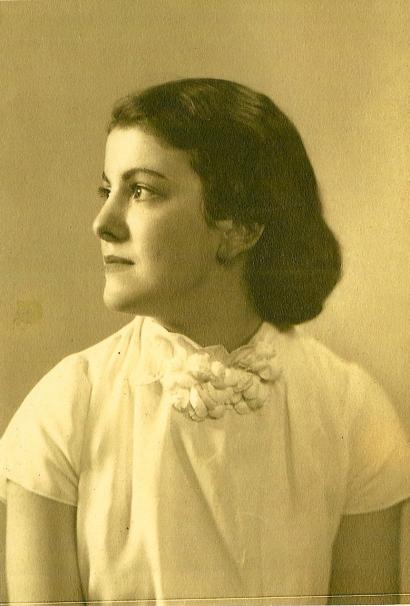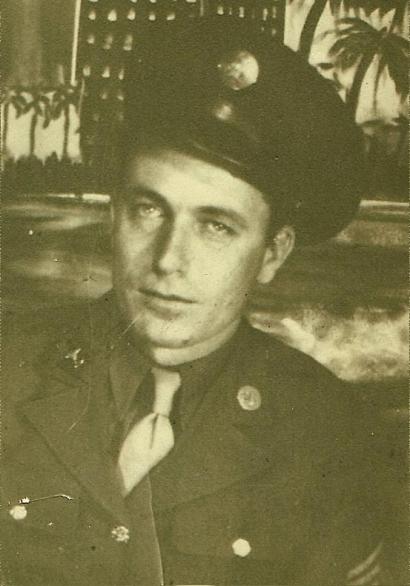William Thomas Akins
- DeKalb County, Georgia
- Born August 1, 1918
- Sergeant First Class, U.S. Army
- Service Number 14021438
- Missing in Action – Presumed Dead
- Died November 2, 1950 in Korea
Sergeant First Class Akins was a Medic with the Medical Company, 8th Cavalry Regiment, 1st Cavalry Division. He was listed as Missing in Action while tending his wounded comrades near Unsan, North Korea on November 2, 1950. He was presumed dead on December 31, 1953.
His name is inscribed on the Courts of the Missing at the Honolulu Memorial. Sergeant First Class Akins was awarded the Purple Heart, the Combat Medical Badge, the Korean Service Medal, the United Nations Service Medal, the National Defense Service Medal, the Korean Presidential Unit Citation and the Republic of Korea War Service Medal.
U .S. Department of Defense
Office of the Assistant Secretary of Defense (Public Affairs)
News Release
IMMEDIATE RELEASE No. 489-08
June 09, 2008
Soldier Missing In Action From Korean War Is Identified
The Department of Defense POW/Missing Personnel Office (DPMO) announced today that the remains of a U.S. serviceman, missing in action from the Korean War, have been identified and will be returned to his family for burial with full military honors.
He is Sergeant First Class Class W.T. Akins, U.S. Army, of Decatur, Georgia. He will be buried on June 26, 2008, in Arlington National Cemetery near Washington, D.C.
Representatives from the Army met with Akins’ next-of-kin to explain the recovery and identification process, and to coordinate interment with military honors on behalf of the Secretary of the Army.
In November 1950, Akins was a member of the Medical Company, 8th Cavalry Regiment, 1st Cavalry Division then occupying a defensive position near Unsan, North Korea north of a bend in the Kuryong River known as the Camel’s Head. On November 1, elements of two Chinese Communist Divisions struck the 1st Cavalry Division’s lines, collapsing the perimeter and forcing a withdrawal. Akins was reported missing on Nov. 2, 1950 and was one of the more than 350 servicemen unaccounted-for from the battle at Unsan.
In April 2007, the Democratic People’s Republic of Korea (D.P.R.K.), acting through the intermediary of New Mexico Governor Bill Richardson and former U.S. Secretary of Veterans Affairs Anthony Principi, repatriated to the United States six boxes of human remains believed to be those of U.S. soldiers. The D.P.R.K. reported that the remains were excavated in November 2006 near Unsan in North Pyongan Province.
Among other forensic identification tools and circumstantial evidence, scientists from JPAC and the Armed Forces DNA Identification Laboratory also used mitochondrial DNA and dental comparisons in the identification of Akins’ remains.
For additional information on the Defense Department’s mission to account for missing Americans, visit the DPMO web site at http://www.dtic.mil/dpmo or call (703) 699-1169.
By BO EMERSON
Courtesy of The Atlanta Journal-Constitution
26 June 2008:
Thursday, Marianne Akins Suski will travel to Arlington National Cemetery to witness the burial of her father, Army Sergeant First Class W.T. Akins, with full military honors.
It’s a moment Suski’s family has both waited for and despaired of. She was 2 1/2 years old when her father, a native of Decatur, was declared missing in action. She is a grandmother now. W.T. Akins disappeared during combat in Korea 58 years ago.
The daughter barely knew her father, but she’s lived a lifetime with a mother who never stopped hoping that he would somehow return. And after more than half a century in an unmarked grave on a foreign battlefield, Sergeant Akins is indeed coming home.
“For 60 years she’s believed this could happen,” Suski said. “It’s a miracle, and sometimes miracles happen for all the right reasons, to the right people.”

W.T. Akins, those who knew him say, was a gentle soul, a man who had an easy rapport with his patients and his fellow soldiers.
Growing up near Sycamore Drive in Decatur, he played in the woods behind the Scott family’s vast property, and his pets included a trained rooster and a wild white dog that he claimed was a wolf.
He was 13 years older than his niece, Barbara Akins, whose family shared a house with his, and he occasionally accepted responsibility for her care without grumbling.
Even after she discovered, then accidentally broke, a homemade crystal radio under his bed, “he never raised his voice,” she said.
Akins, who his family called “Dub” or “W.T.” but never by his given name, William Thomas, attended Avondale High School, but apparently didn’t graduate. Instead he joined a Civilian Conservation Corps camp, which was a guarantee of decent food and lodging during the lean years of the Great Depression.
As soon as he was old enough, he enlisted as a medic in the Army. There he found his true love and his true home.
“He was military down to the socks he had on,” said his widow, Mary Elizabeth Akins, 88, who now lives in a continuing-care facility not far from Arlington in McLean, Virginia. She was part of the nursing corps at Stark General Hospital in Charleston, South Carolina, when she met the young medic from Georgia.
During World War II, he served in evacuation hospitals in North Carolina, while she worked Florida. After she left the Army, they married and had a child. At one point, she says, they caught a traveling production of the World War II musical “South Pacific,” and its songs became their songs. He bought her a little music box that played “Some Enchanted Evening.”
Akins was stationed at Fort Monmouth, N.J., when he was sent overseas during the Korean conflict. She didn’t try to talk him out of going.
“I couldn’t see any point in it,” Mrs. Akins said. “That’s what he wanted to do.”
W.T. Akins had been in Korea for just six months when Communist Chinese troops overran his Medical Company’s position on the Kuryong River near Unsan. It was November 1950, and after the battle, he was among 350 soldiers unaccounted for. All these years later, some 8,100 U.S. veterans of the Korean conflict remain MIA, according to the Defense Department.
Her husband remained listed as missing for several years, but Mrs. Akins always kept expecting him to walk in the door.
“My mother was under the impression that there was a real possibility that he was coming back alive,” said her daughter. “She was willing to wait.”
The young mother and daughter stayed with friends in Charleston for a while, then with a brother in Baltimore, and then made a home of their own.
“She went back to work,” Suski said. “She’s good at managing money, she’s tough as nails, and she did what she had to do.”
Mary Akins kept all her letters from her husband in her bedside table. She kept the suit she wore after they were married in the front of her bedroom closet. From time to time, she would open her music box and listen to it play “Some Enchanted Evening.”
Over the years she had suitors but was never interested in remarrying. “I was so busy raising Little Miss Business there,” she said, referring to her daughter, “I didn’t have time to think about it.”
As time passed, Mary Akins’ hopes about her husband’s fate changed. More than anything, she wanted an answer. Was he dead? Was he languishing in a POW camp? What happened?
Her answer would finally come, almost 60 years after his disappearance, thanks to sophisticated science and some luck.
Last year a U.S. delegation including New Mexico Governor Bill Richardson went to North Korea to secure, among other things, the return of six boxes of human remains found near Unsan in November 2006 and believed to be those of U.S. soldiers.
Forensic pathologists at Hickam Air Force Base in Hawaii would use dental records, DNA and other evidence to help identify the bodies. They also had some larger clues. Sergeant Akins’ dog tags, for instance, were among the items returned from North Korea.
For a positive identification, though, the pathologists rely on mitochondrial DNA, which must be traced through the mother’s side of the family.
As luck would have it, W.T. Akins’ mother was a Cagle — Molly Cagle of Jasper, who married W.T. Akins Sr. from Ball Ground. Lucky because Pickens County is thickly settled with the Cagle clan. The Army contacted Barbara Akins Loyd (Akins’ niece) in Hiawassee, and last year she went to the yearly Cagle family reunion in Pickens.
There, her cousin Earl Cagle helped track down a female descendant of Molly’s sister, who provided a DNA sample. It matched.
The Army informed Suski that her father’s remains had been located.
Suski took a train from her home in West Hartford, Connecticut, to Virginia to tell her mother in person.
As the daughter recalls, “She look like she was suspended in space for a minute.”
The mother wanted to know, had he been tortured?
They tell me he died instantly, the daughter said.
“I was just afraid he’d been in a prison or something,” the mother said later. “It was such a great relief to know he hadn’t suffered all those years.”
Thursday at Arlington National Cemetery, the family that her husband never knew, including three grandchildren and three great-grandchildren, will gather to hear the trumpet play taps, and to finally welcome Sergeant W.T. Akins home.
AKINS, WILLIAM L
- SGT United States Army
- DATE OF BIRTH: 10/18/1932
- DATE OF DEATH: 09/06/1953
- BURIED AT: SECTION 33 SITE 7819
- ARLINGTON NATIONAL CEMETERY
Michael Robert Patterson was born in Arlington and is the son of a former officer of the US Army. So it was no wonder that sooner or later his interests drew him to American history and especially to American military history. Many of his articles can be found on renowned portals like the New York Times, Washingtonpost or Wikipedia.
Reviewed by: Michael Howard

